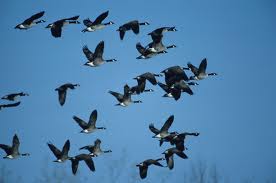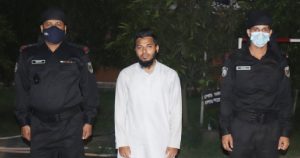Q&A with Robert Engelman: We asked Worldwatch researcher Robert Engelman, author of the “Our Bodies, Our Future: Expanding Comprehensive Sexuality Education” in Worldwatch’s EarthEd: Rethinking Education on a Changing Planet, about what motivated him to explore sexuality education to move the next generation toward sustainability.

What motivated you to write your chapter on sexuality education for EarthEd?
I’ve been researching and writing for years about the connections between population change, gender relations, reproductive health, and the environment. When my Worldwatch friend and colleague Erik Assadourian first told me about the idea of an edition of State of the World on Earth Education, it immediately struck me that the book needed a chapter on sexuality education.
The topic is almost never written about in the context of the environment, yet it obviously has implications for the future of humanity and the planet. Strong curricula and teachers of comprehensive sexuality education (CSE) contribute to significant decreased childbearing among teens and young adults, contributing to more sustainable future human populations. The courses also teach tolerance for individual differences and respect for other people’s bodies and sexual intentions, and they encourage healthy relationships generally.
On a personal level, I had never written in any detail about sex education before, so I was intrigued by the challenge. I was also fortunate enough to be able to enlist Mona Kaidbey, the United Nations’ just-retired top expert on CSC, to be the first author of the chapter. Her astounding expertise made the writing a joy and she guided my own personal EarthEd.
What do you think needs to change for students to be truly future-ready?
As the pioneering conservationist John Muir once said, everything in the universe is connected to everything else. Yet schools generally fail to impart this essential wisdom. Failing to see how our own lives, the behavioral choices we make, and our numbers affect the way we interact with each other and with the environment, we have stumbled mostly without incredibly bad intention into our current global predicament.
Comprehensive sexuality education is an ideal vehicle for bringing these interrelationships together in a way that it is immediately practical for young people. They are just beginning to explore their own sexuality and are on the cusp of making—or failing to make—effective decisions on how to channel their sexuality in healthy and fulfilling ways.
Many people talk about the importance of environmental education or ecoliteracy. How does your chapter go beyond that?
Our chapter on comprehensive sexuality education goes straight to the interaction between human-caused environmental change and the importance of healthy human relationships. The world’s population would today be far more environmentally sustainable if patriarchy and sexual violence had never emerged or at least been effectively constrained centuries ago.
We have the opportunity today—indeed the imperative—to do so today so that our current population of 7.5 billion people living in nearly 200 countries can live together peaceably while struggling to keep the planet friendly to civilization and indeed habitable for human beings and other creatures.
What examples are there of schools or institutions who are doing EarthEd right or who are at least moving in the right direction?
Our chapter offers several examples of schools demonstrating excellent age-appropriate sexuality education, which some of the best such stories coming from the Netherlands. But such programs can be found in many countries around the world. Relative to EarthEd generally, I believe the global movement known as Waldorf or Steiner education may come closest to the concept, imbuing children with a love of nature and the physical experience of working with their limbs and their senses to understand the world. Discouragingly , however, even Waldorf schools do not seem yet to have embraced comprehensive sexuality education.
What do you think the biggest barrier to change is for today’s education system?
I don’t think most educators or the policymakers who direct and fund their work understand the seriousness and danger of the environmental and social moment in which we are living. There’s an assumption that the future will be a continuation of current trends with little chance of discontinuity or catastrophe. There’s too much attention to new technology in teaching. There’s too little respect for the educational importance of exposure to nature and the long history of person-to-person mentoring and apprenticeship as time-proven methods of knowledge and wisdom transfer.
What event or situation changed the way you saw your own connection to the planet?
Family camping trips when I was a child and backpacking outings when I was a teenager probably set the stage for a love of nature, and especially for solitude in nature. Readings in college and particularly an influential teacher of a course called Human Geography opened my eyes to the importance of the human footprint and its transformation of the planet.
I can’t pinpoint a specific event. The hoopla around the original Earth Day in 1970 probably played some role, but for me it was a slow but increasingly powerful evolution of my ideas and views. As a journalist I traveled for nearly a year in 1977 and 1978 in Latin America and encountered people and stories that sparked my interest in population and gender. In 1984 I first wrote about human-caused climate change—and immediately knew it was the single most important story I could cover. That realization contributed eight years later to a career change that ultimately led me to one of the world’s premier environmental think tanks—the Worldwatch Institute.
________________________________________
Robert Engelman is President Emeritus and a senior fellow of the Worldwatch Institute. He is a contributing author to the Worldwatch Institute’s EarthEd: Rethinking Education on a Changing Planet.




